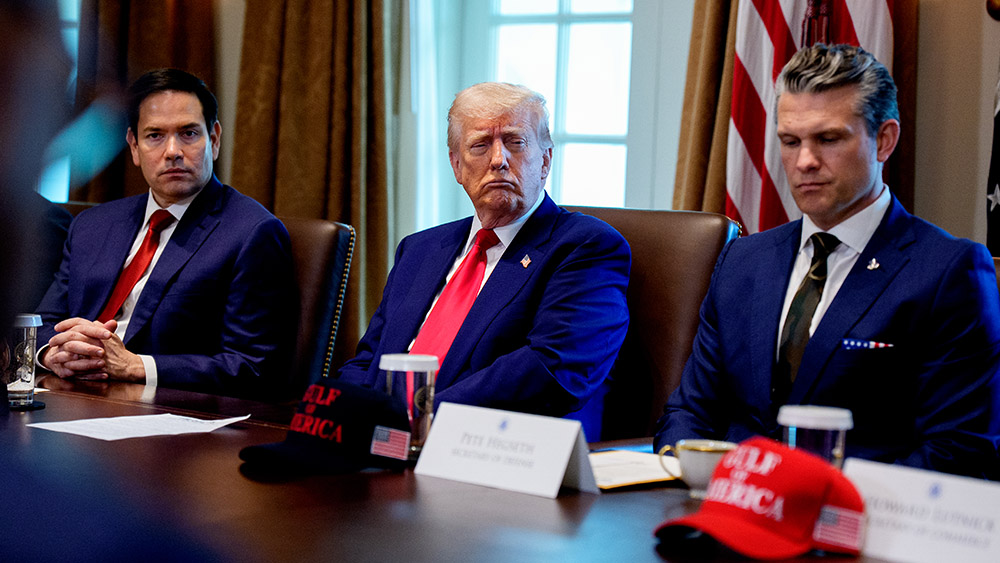- Trump demands a 30-day ceasefire between Russia and Ukraine, threatening sanctions on violators from either side.
- Russia’s struggling economy may push Putin toward negotiations, but past ceasefires have failed.
- Zelensky cautiously supports the proposal but insists Russia must prove its commitment to peace.
- U.S. war fatigue grows as financial and political pressures shift focus to other global conflicts.
- The Kremlin’s response will determine if Trump’s strategy succeeds or further isolates Russia.
President Donald Trump has called for a 30-day unconditional ceasefire between Russia and Ukraine, warning that the U.S. and its allies will impose crippling sanctions on whichever side violates the agreement. The demand, issued via Truth Social yesterday, comes as Russia’s economy shows signs of strain under existing sanctions, raising hopes that Moscow may finally be pressured into negotiations. Meanwhile, Ukrainian President Volodymyr Zelensky has signaled openness to the proposal, but skepticism remains over whether either side will comply.
A shift in strategy
Trump’s latest ceasefire push marks a departure from previous efforts by explicitly threatening sanctions against both Russia and Ukraine if hostilities continue. «If the ceasefire is not respected, the U.S. and its partners will impose further sanctions,» Trump declared, adding that the pause should «ultimately build toward a Peace Agreement.» This hardline stance reflects growing frustration in Washington as the war drags on, with Vice President J.D. Vance recently accusing Russia of «asking for too much» in negotiations.
Unlike past proposals, this one arrives at a moment when Russia appears increasingly vulnerable to economic pressure. Reports suggest President Vladimir Putin is eager to regain access to Western markets, raising the possibility that sanctions could finally force concessions. However, Russia has so far only agreed to a symbolic three-day ceasefire tied to World War II commemorations in a move Ukraine dismissed as a «farce» after alleged violations.
Zelensky’s cautious response
Zelensky, who spoke with Trump before the announcement, publicly endorsed the 30-day ceasefire but insisted Russia must «prove their willingness to end the war.» In a social media post, he stated, «Ukraine is ready for a full ceasefire starting right now, from this very moment.» Yet his invitation for Trump to visit Ukraine earlier this year, seen by some as a sarcastic jab at Trump’s claim he could resolve the war in 24 hours, hints at lingering tensions.
The Ukrainian leader is walking a tightrope. While reliant on U.S. support, he faces pressure to avoid appearing weak amid reports that American patience is wearing thin. With Washington increasingly distracted by conflicts in the Middle East, Zelensky risks losing his strongest backer if he rejects diplomacy outright.
America’s war fatigue
The U.S. has poured billions into Ukraine’s defense, but Trump’s ultimatum signals a turning point. His administration has hinted it may abandon mediation efforts if no progress is made, a threat underscored by Secretary of State Marco Rubio’s warnings that America could move on to other issues. The financial toll is also drawing scrutiny. As Trump noted, «Thousands of young soldiers are dying every week and everyone should want it to STOP,» a reality that fuels domestic calls to wind down involvement.
Russia’s recent missile strikes on Kyiv, which Trump called «very bad timing,» have only heightened urgency. Yet critics argue that cutting aid or pressuring Ukraine into concessions could embolden Putin. The stakes for them are high: A failed ceasefire might push the U.S. to disengage entirely, leaving Ukraine vulnerable.
Will Putin budge?
The Kremlin’s response will determine whether Trump’s gamble pays off. While Putin has expressed interest in re-engaging with the West, he has resisted long-term ceasefires, fearing they would allow Ukraine to regroup. Still, with Russia’s economy faltering, the threat of additional sanctions may prove harder to ignore.
Trump, meanwhile, is positioning himself as a dealmaker, vowing to be «available on a moment’s notice» to broker peace. His approach of combining sanctions with direct negotiation contrasts sharply with Biden’s strategy, but its success hinges on whether Moscow and Kyiv see more to gain from talking than fighting.
The coming weeks will test whether Trump’s hardball tactics can break the deadlock. For Ukraine, accepting a ceasefire risks ceding momentum; for Russia, rejecting it invites deeper isolation. And for the U.S., the dilemma is whether to keep bankrolling a war with no end in sight or force a resolution, even if it leaves Ukraine at a disadvantage.
As Trump warned, the alternative is grim: a prolonged conflict that could spiral into a broader war. With global attention shifting and resources stretched thin, America’s message to Zelensky seems clear: find a way to end this, or face the consequences alone.
Sources for this article include:
